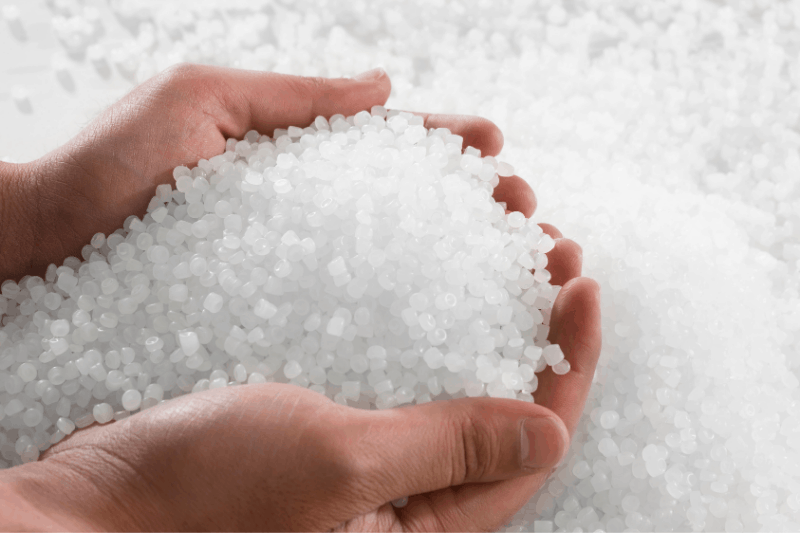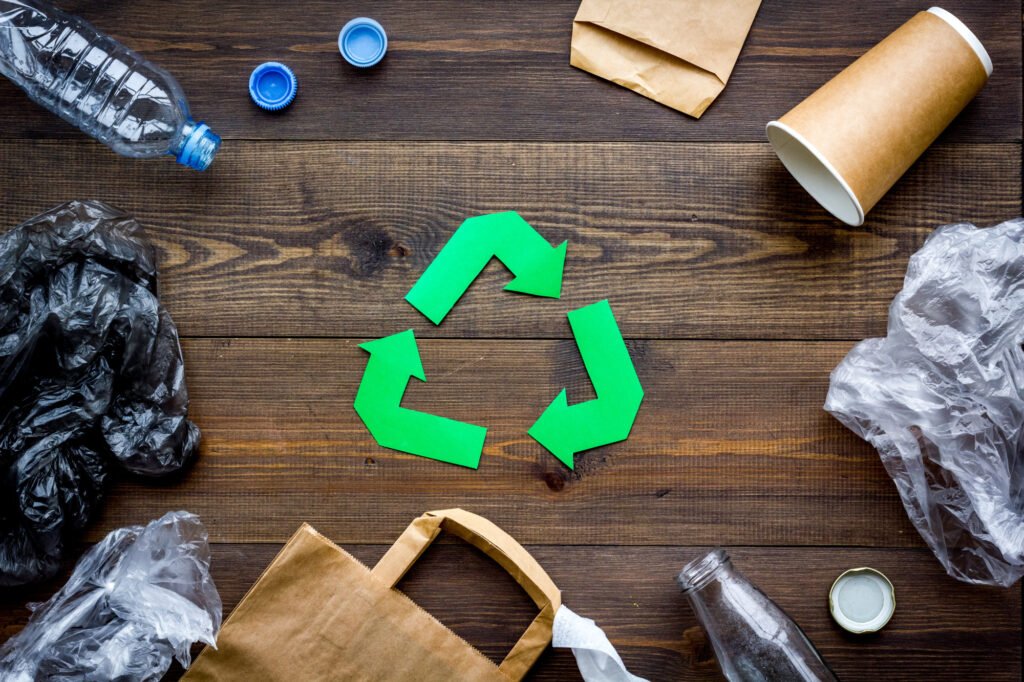Introduction
Overview of the Plastic Manufacturing Industry
The plastic manufacturing industry is a cornerstone of modern economies, with a global market size valued at approximately USD 580 billion in 2023. Projections indicate that this market is expected to grow at a compound annual growth rate (CAGR) of 4.2% over the next decade, driven by increasing demand across various sectors such as packaging, automotive, construction, and healthcare.
The industry is dominated by several key players, including companies like BASF, Dow Chemical, ExxonMobil, and SABIC. These companies have established themselves through extensive research and development, leading to innovations in polymer technology and sustainable practices.
Plastic products are ubiquitous in everyday life, serving critical functions in packaging, automotive components, electronics, healthcare products, and construction materials. The versatility, durability, and cost-effectiveness of plastics make them indispensable in numerous applications.
Despite its significance, the plastic manufacturing industry faces substantial challenges. Environmental concerns, such as plastic waste and pollution, resource efficiency, and the depletion of non-renewable resources, are paramount. Additionally, regulatory pressures and the need for sustainable practices are driving the industry towards more eco-friendly solutions.

Importance of Efficient Plastic Pelletizing
Plastic pellets are the building blocks of most plastic products. These small, standardized granules are used as raw materials in various manufacturing processes, including injection molding, extrusion, and blow molding. The quality and consistency of these pellets are crucial for the production of high-performance plastic products.
The quality of plastic pellets directly influences the properties of the final product, such as strength, durability, and appearance. Inconsistent or low-quality pellets can lead to defects, increased waste, and compromised product performance, affecting the manufacturer’s reputation and profitability.
Efficient pelletizing processes contribute to lower production costs by optimizing material usage, reducing energy consumption, and minimizing waste. Improved pelletizing efficiency also enhances production throughput, allowing manufacturers to meet market demands more effectively.
Pelletizing plays a critical role in the recycling of plastic waste. By converting recycled plastics into high-quality pellets, manufacturers can reduce their reliance on virgin materials, promote circular economy principles, and lower their environmental footprint.
Objectives of Exploring Innovative Solutions
Innovative solutions aim to streamline the pelletizing process, increasing throughput and reducing downtime. Advanced machinery and automation technologies are being developed to achieve these goals, ensuring that manufacturers can produce high volumes of pellets quickly and efficiently.
Research and development efforts are focused on creating pelletizing technologies that deliver uniform and high-quality pellets. Innovations such as precise temperature control, advanced screw designs, and optimized cooling systems are critical for maintaining pellet quality and consistency.
Energy-efficient pelletizing machines and processes are essential for reducing the environmental impact of plastic manufacturing. Innovations such as energy recovery systems, improved insulation, and the use of renewable energy sources contribute to lower energy consumption and greenhouse gas emissions.
Technological advancements are making it easier to incorporate recycled materials into the pelletizing process. Enhanced filtration systems, better compounding techniques, and innovations in material handling are enabling manufacturers to produce high-quality pellets from recycled plastics.
By adopting innovative pelletizing solutions, manufacturers can reduce operational costs and gain a competitive edge. Cost savings from energy efficiency, reduced material waste, and improved process productivity translate into better pricing strategies and increased market share.
Common plastic pelletizing methods
Plastic pelletizing is a crucial process in the plastics industry, converting raw polymers into uniform pellets for further processing. Several traditional methods are widely used:
- Strand pelletizing: In this process, molten plastic is extruded through a die to form continuous strands. The strands are then cooled in a water bath and cut into pellets using a rotary cutter. This method is suitable for a wide range of polymers and is known for its high output rates.
- Underwater pelletizing: Similar to strand pelletizing, underwater pelletizing involves extruding molten plastic through a die. However, the cutting process occurs directly underwater, where the pellets are immediately cooled and solidified. This method is particularly useful for materials sensitive to heat and oxidation.
- Hot-face pelletizing: In this method, the molten plastic is extruded through a die with multiple holes, forming short strands. A rotating knife cuts the strands as they exit the die, and the pellets are then cooled by air or water. This process is suitable for materials with low melt viscosity and is known for its high production rates.
- Compounding and pelletizing: This process combines multiple raw materials, such as polymers, fillers, and additives, to create a homogeneous mixture. The mixture is then extruded and pelletized using one of the above methods. Compounding allows for the customization of material properties to suit specific applications.
Drawbacks of traditional processes
Despite their widespread use, traditional plastic pelletizing processes have several limitations:
- Energy consumption: Traditional pelletizing methods often require high energy inputs to melt and extrude the plastic. The cooling process, particularly in water-based systems, also consumes significant amounts of energy. This high energy consumption contributes to increased production costs and environmental concerns.
- Water usage: Strand and underwater pelletizing processes rely heavily on water for cooling. Large volumes of water are consumed, which can strain local water resources and increase operational costs. Additionally, the used water may contain small plastic particles, leading to potential environmental issues if not properly treated.
- Polymer degradation: During the pelletizing process, polymers are exposed to heat, shear stress, and oxidation, which can cause degradation of the material. This degradation can lead to changes in the polymer’s mechanical, thermal, and optical properties, potentially affecting the quality of the final product.
- Fines generation: Traditional pelletizing methods often produce a significant amount of fines, which are small, dust-like particles. These fines can cause problems in material handling, storage, and processing, such as clogging equipment and reducing overall efficiency. Fines also represent material waste and can contribute to environmental pollution if not properly managed.
- Limited flexibility: Traditional pelletizing processes are often optimized for specific polymer types and grades. Changing materials or product specifications may require significant adjustments to the process parameters, leading to downtime and reduced productivity.
- Maintenance and wear: The high pressures, temperatures, and abrasive nature of the plastic pelletizing process can cause wear on equipment components, particularly the extrusion die and cutting blades. Regular maintenance and replacement of these parts are necessary to ensure consistent pellet quality and to avoid unplanned downtime.
- Quality control challenges: Ensuring consistent pellet size, shape, and quality can be challenging with traditional pelletizing methods. Variation in process parameters, such as temperature, pressure, and cutting speed, can lead to inconsistencies in the final product. Implementing effective quality control measures is crucial to maintain product standards.
Addressing these limitations is essential for improving the efficiency, sustainability, and cost-effectiveness of plastic pelletizing processes. Advances in technology, such as the development of more energy-efficient equipment, closed-loop water systems, and innovative pelletizing methods, can help mitigate some of these drawbacks. However, there remains a need for continued research and innovation to further optimize the plastic pelletizing process and meet the evolving demands of the industry.
Energy-efficient Pelletizing Technologies
Advanced Extrusion Techniques
Advanced extrusion techniques are at the forefront of energy-efficient pelletizing technologies. These techniques focus on optimizing the extrusion process to maximize output while minimizing energy consumption. Key innovations include:
- Twin-screw extruders: These machines offer better mixing and compounding capabilities, allowing for more efficient processing of polymers and additives. Their design enables lower energy usage compared to traditional single-screw extruders.
- High-torque, low-speed extruders: These extruders operate at lower speeds but with higher torque, reducing energy consumption and wear on the machinery. This results in lower operational costs and extended equipment lifespan.
- Integrated degassing systems: These systems help in removing volatile compounds during the extrusion process, reducing the need for additional heating and cooling, thus saving energy.
Novel Heating and Cooling Systems
Innovative heating and cooling systems are crucial for enhancing the energy efficiency of pelletizing processes. These systems ensure precise temperature control, which is vital for producing high-quality pellets. Key innovations include:
- Induction heating: This method uses electromagnetic fields to heat the extruder barrel and screw more efficiently than traditional resistance heaters. Induction heating provides rapid and uniform heating, reducing energy consumption and improving process stability.
- Advanced cooling technologies: New cooling systems, such as liquid nitrogen cooling or advanced air-cooling techniques, provide faster and more efficient cooling of the extruded material. These systems help maintain the integrity and quality of the pellets while reducing energy use.
- Heat recovery systems: These systems capture and reuse waste heat generated during the extrusion process. By recycling this energy, manufacturers can significantly reduce overall energy consumption and operating costs.
Automation and Process Control
Intelligent Monitoring and Control Systems
Automation and intelligent control systems are transforming the pelletizing industry by enhancing process efficiency and consistency. These systems leverage advanced sensors, data analytics, and machine learning to optimize pelletizing operations. Key innovations include:
- Real-time monitoring: Advanced sensors and monitoring systems provide real-time data on temperature, pressure, and material flow within the extruder. This information allows operators to make immediate adjustments, ensuring optimal process conditions and pellet quality.
- Adaptive control algorithms: These algorithms use machine learning to continuously adjust process parameters based on real-time data. By predicting and responding to changes in the extrusion process, these systems maintain consistent pellet quality and reduce waste.
- Remote monitoring and control: With the advent of Industry 4.0 technologies, pelletizing systems can be monitored and controlled remotely. This capability allows for more flexible and efficient operations, as well as quicker response times to any issues that may arise.
Predictive Maintenance and Optimization
Predictive maintenance and optimization are essential for minimizing downtime and maintaining efficient pelletizing operations. These approaches use data analytics and machine learning to predict equipment failures and optimize maintenance schedules. Key innovations include:
- Predictive analytics: By analyzing historical data and identifying patterns, predictive analytics can forecast potential equipment failures before they occur. This allows for proactive maintenance, reducing unexpected downtime and extending equipment lifespan.
- Condition-based maintenance: This approach uses real-time data from sensors to monitor the condition of critical components. Maintenance is performed only when necessary, based on the actual condition of the equipment, rather than on a fixed schedule. This reduces maintenance costs and ensures that machinery operates at peak efficiency.
- Optimization software: Advanced software tools can analyze the entire pelletizing process, identifying areas for improvement and optimizing process parameters. These tools help manufacturers achieve higher productivity, better pellet quality, and lower energy consumption.
Case Studies and Industrial Applications
Successful Implementation of Innovative Solutions
Case Study 1: Advanced Extrusion Techniques at GreenPlast Industries
GreenPlast Industries, a leader in sustainable plastic solutions, implemented twin-screw extruders to enhance their pelletizing process. The advanced extrusion techniques resulted in significant improvements in mixing and compounding efficiency. The company reported a 15% reduction in energy consumption and a 20% increase in production throughput. Additionally, the consistent pellet quality achieved through these techniques allowed GreenPlast to expand their product offerings and enter new markets.
Case Study 2: Automation and Predictive Maintenance at EcoPolymer Corp
EcoPolymer Corp, a major player in the recycled plastics industry, adopted intelligent monitoring and control systems combined with predictive maintenance technologies. By implementing real-time monitoring and adaptive control algorithms, EcoPolymer achieved a 25% reduction in production downtime and a 30% increase in overall equipment effectiveness. Predictive maintenance analytics helped the company anticipate and prevent equipment failures, resulting in lower maintenance costs and extended machinery lifespan.
Quantitative and Qualitative Benefits
Energy Savings
Both case studies highlight significant energy savings as a direct result of implementing innovative pelletizing technologies. GreenPlast Industries achieved a 15% reduction in energy consumption, while EcoPolymer Corp experienced improved energy efficiency through advanced process control and predictive maintenance. These energy savings translate into lower operational costs and a reduced environmental footprint.
Productivity Improvements
Productivity improvements are evident in both case studies. GreenPlast Industries reported a 20% increase in production throughput due to the efficiency of twin-screw extruders. EcoPolymer Corp saw a 30% increase in overall equipment effectiveness, resulting from minimized downtime and optimized process parameters. These enhancements enable manufacturers to meet increasing market demands and improve their competitive position.
Quality Enhancements
The implementation of innovative solutions also led to significant quality enhancements. GreenPlast Industries achieved consistent pellet quality, allowing them to expand their product range and enter new markets. EcoPolymer Corp benefited from real-time monitoring and adaptive control algorithms, ensuring uniform pellet quality and reducing waste. High-quality pellets are essential for producing reliable and durable plastic products, enhancing the reputation and profitability of manufacturers.
Technological hurdles and limitations
Despite the advancements in plastic pelletizing technologies, several technological hurdles and limitations remain:
- Material compatibility: Some innovative pelletizing methods may not be suitable for all types of polymers or polymer blends. Developing technologies that can handle a wide range of materials while maintaining high pellet quality is a significant challenge.
- Scale-up and industrialization: Translating laboratory-scale innovations into industrial-scale processes can be difficult. Ensuring the stability, reliability, and economic viability of new technologies at larger scales requires extensive research, testing, and optimization.
- Process control and automation: As pelletizing technologies become more complex, implementing effective process control and automation systems becomes increasingly important. Developing robust sensors, monitoring systems, and control algorithms is crucial for maintaining consistent pellet quality and optimizing process efficiency.
- Energy efficiency: While some new pelletizing methods aim to reduce energy consumption, further improvements in energy efficiency are necessary to minimize environmental impact and reduce operating costs.
Economic and regulatory considerations
The adoption of new plastic pelletizing technologies is influenced by various economic and regulatory factors:
- Cost-benefit analysis: Companies must carefully evaluate the costs associated with implementing new pelletizing technologies against the potential benefits, such as improved pellet quality, increased productivity, and reduced environmental impact.
- Market demand and competition: The adoption of new technologies may be driven by market demands for higher-quality pellets or more sustainable production processes. Companies that fail to innovate may risk losing their competitive edge.
- Regulatory compliance: Increasingly stringent environmental regulations, such as those targeting greenhouse gas emissions and water usage, may necessitate the adoption of more eco-friendly pelletizing technologies. Compliance with these regulations can be a significant driver for technological innovation.
- Intellectual property and technology transfer: The development and commercialization of new pelletizing technologies may be affected by intellectual property rights and the ease of technology transfer between academia and industry.
Sustainable and eco-friendly approaches
As environmental concerns continue to grow, the development of sustainable and eco-friendly plastic pelletizing approaches becomes increasingly important:
- Renewable energy sources: Integrating renewable energy sources, such as solar or wind power, into the pelletizing process can help reduce reliance on fossil fuels and minimize greenhouse gas emissions.
- Water conservation and recycling: Implementing closed-loop water systems and water recycling technologies can significantly reduce water consumption in pelletizing processes, minimizing the strain on local water resources.
- Biodegradable and bio-based polymers: Developing pelletizing technologies that are compatible with biodegradable and bio-based polymers can contribute to the production of more sustainable plastic products.
- Circular economy principles: Incorporating circular economy principles, such as design for recyclability and end-of-life management, can help minimize plastic waste and promote the sustainable use of resources.
- Life cycle assessment: Conducting comprehensive life cycle assessments of pelletizing technologies can provide valuable insights into their environmental impact and guide the development of more sustainable solutions.
Addressing these challenges and embracing sustainable approaches will be crucial for the future development of plastic pelletizing technologies. Collaboration between industry, academia, and government bodies will be essential to drive innovation, overcome technological hurdles, and promote the adoption of eco-friendly practices. By investing in research and development, fostering knowledge sharing, and implementing supportive policies, the plastic pelletizing industry can work towards a more sustainable and efficient future.






